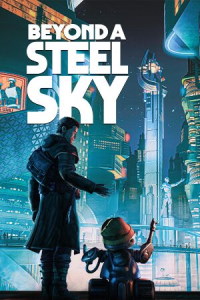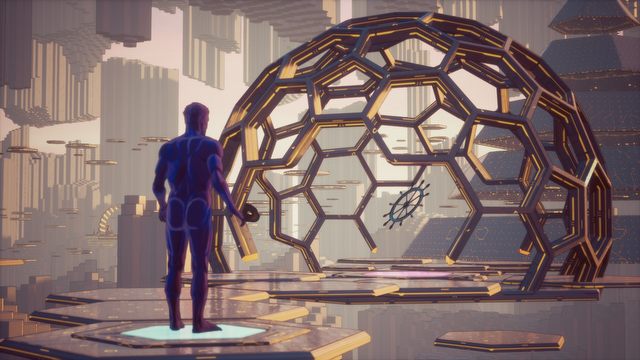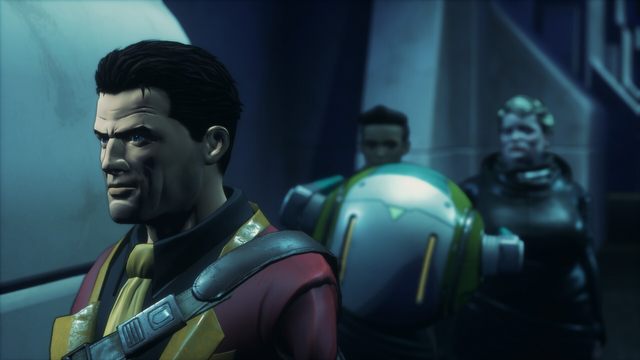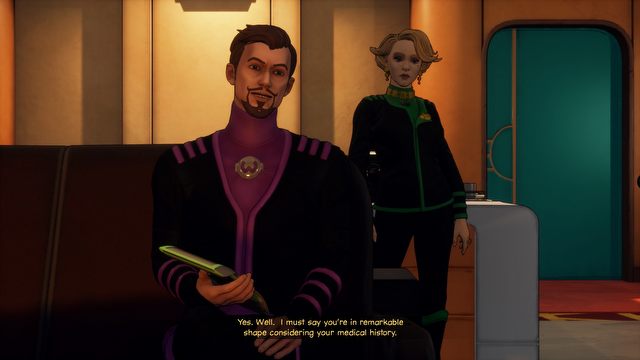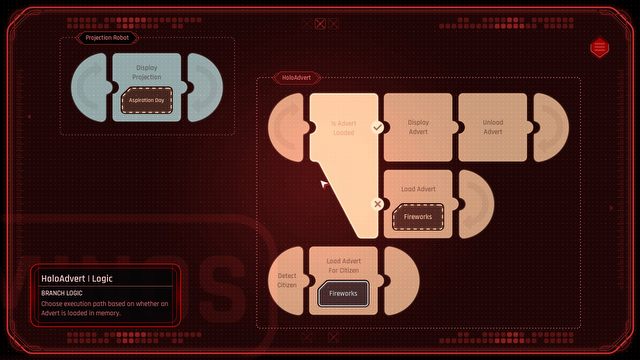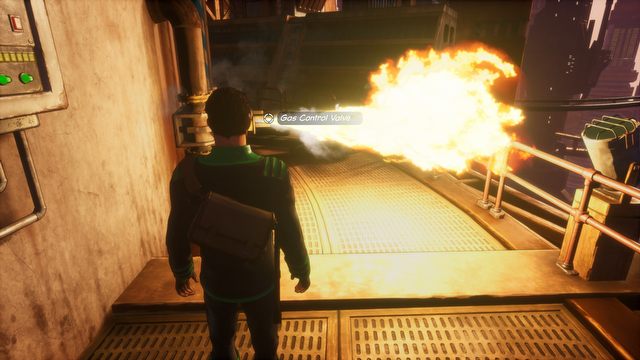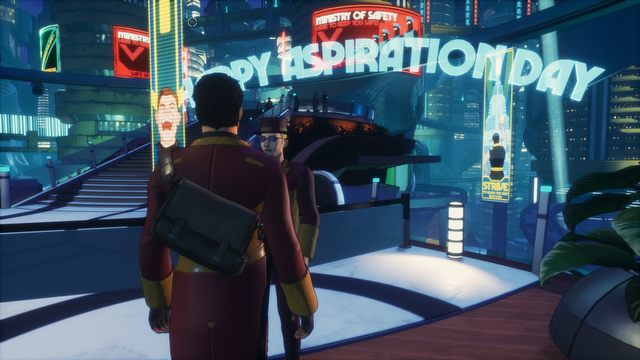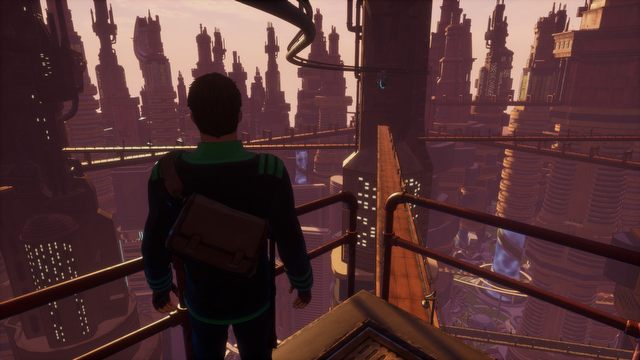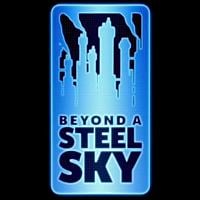A Classic Adventure in Modern Setting – Beyond a Steel Sky review
Beyond a Steel Sky proves that even a quarter of a century is worth waiting for a proper sequel. Or that today it's worth looking at the 26-year-old Amiga game to have more fun with this newer production.
The review is based on the PC version. It's also relevant to iOS version(s).

- a successful continuation of a story set 26 years ago;
- balanced environmental puzzles;
- interesting clue system;
- good old-fashioned adventure.
- Pleasant to one’s eye and coherent visuals following a comic-book-like art style.
- a lot of technical errors;
- too many puzzles are based on "hacking”;
- the untapped potential of some characters.
At a time when movie studios are experimenting with the return of iconic titles, usually to poor effect, we get Beyond a Steel Sky - a sequel to the adventure game released 26 years ago! And it's a pretty successful sequel, keeping the spirit of the original Beneath a Steel Sky and not relying solely on nostalgia. The once-standard point&click and two-dimensional levels were replaced by three-dimensional TPP, and instead of pixel art visuals, players receive a comic-book-like graphic style with a drop of cel-shading resembling the games from Telltale studio.
At first glance, the atmosphere of the new production is also slightly different, striking with a palette of cheerful, bright colors compared to the gloomy colors of the original. But this is related a bit to the plot of Beyond a Steel Sky. By contrast, the cyberpunk setting today does not stand out as much as it once did, among the dominant productions of Sierra and Lucas Arts.
The Sequel, however, defends itself by remaining a flesh-and-blood adventure-with a plot, dialogues, and environmental puzzles in the foreground. There are neither illusory choices nor moral problems here. Also, it is not a walking simulator. In Beyond the Steel Sky we find what has always been the best in games – pure fun to play and learn a new story. It's just a shame it's plagued by technical problems.
Return to Union City
The game's plot begins ten years after the events from the first installment. Once again we meet Robert Foster living somewhere in the Australian wastelands called the Gap, like Mad Max without a car. An idyllic time with a friendly family is interrupted by an attack by a powerful machine surrounded by black-clad cyborgs who kidnap a child present at a picnic. Foster vows to find the boy and, after a short travel, arrives in the vast metropolis of Union City.
He actually returns to Union City, because that's where the story took place in the first installment. It's where Foster parted ways with his best friend, robot Joey, leaving him as the new city manager. While investigating what turned out to be mass kidnappings of children at The Gap, Robert gradually discovers a much wider scale of problems in the metropolis. And Union City has now become a lot more colorful, a bit like Columbia in BioShock: Infinite, though that's not just due to the capabilities of the Unreal 4 engine. We will also re-enter the strange world of virtual reality - more often than before.
Do you need to know the first part of Beneath a Steel Sky to play the sequel?
Not really, though I think it's worth it. The plot of the new game tells us what happened in the original – a little bit of everything in the intro, and then little details during the gameplay. All the time, however, there are smaller and larger references, some objects, details that can be picked up by knowing the first part. The second installment becomes much more cohesive and interesting, especially towards the end, because although the two stories are set ten years apart, they do connect to one another to some extent.
Overall, the plot is satisfying and well-paced. It doesn't have too long sequences and is thus engaging, though at the same time, there are no memorable moments. Well-written dialogues and new characters, especially Orana and Snowbird, do a better job here. They actually appear too rarely. Their roles could be greatly expanded. An undoubted advantage of the game and the story being told, however, are the numerous references to Beneath a Steel Sky. In that respect, fans of the first installment should be really pleased.
Mad Hacker
Environmental puzzles are also pretty good. They are not very simple, nor are they particularly exaggerated, forcing players to come up with totally abstract connections. If you get stuck, the creators have developed a non-invasive hint system hidden in the menu, which gradually serves up more detailed clues if you just want them and. You have to wait 30 seconds for each one. So for a few minutes, we get suggestions on what we should be paying attention to, and that still encourages you to think.
In addition to the standard combination of various items with the environment, Beyond a Steel Sky features "hacking". At the very beginning, Foster gains a scanner for viewing and altering the programmed activities of machines and various robots. By standing in the right place, we can display diagrams of several such devices at the same time and switch instructions accordingly. This allows, for example, to open doors or activate alarms, and even to do things not directly related to the plot.
I got the impression, however, that the developers were a little too eager to rely on the mechanics of the scanner, which makes many puzzles and sections of the game somewhat monotonously. There's not a lot of creativity in them, which quickly comes to light when you compare them to the start of the game when we don't have a scanner yet. I liked the stages and tasks in virtual reality, though. It wasn't a huge challenge, but the lack of a magic device made it instantly more interesting and diverse.
Technical amendments
The pleasant gameplay in Beyond a Steel Sky is unfortunately spoiled by technical errors. The developers are aware of some of them, such as blocking NPCs by objects in their way. The developers are aware of some of them, such as blocking NPCs by objects in their way. I have experienced some other as well, including bugs that forced me to restart the game. Still, there was nothing that couldn’t be fixed with a patch, and I do hope it will be released soon. The bugs are occasional rather than notorious, thus there was no issue that pushed me away from playing. Still, you have to remember you might encounter them
Better Late Than Never
Beyond a Steel Sky can be received differently depending on the starting point. On the Apple Arcade platform, among other mobile games, this game undoubtedly shines with its momentum and visuals straight from the desktops. On PCs, however, it's a standard we've seen many times before. People who don't know the first installment will approach to this game in a different way than fans who played Beneath a Steel Sky on Amiga.
I only remembered the title of the first part, I wasn't really looking forward to the sequel, but Beyond a Steel Sky reminded me of the "Old School" of gaming and how much I miss it! For games without dozens of cosmetic elements, collectibles, seasons, artificially lengthened storylines over a hundred hours, exaggerated to absurd violence or eye-popping instructions for the simplest things. Beyond is a game as simple, pure as it used to be, and it's impossible not to appreciate it.
Dariusz DM Matusiak
ABOUT THE AUTHOR
Completing Beyond a Steel Sky took me about ten hours with a fairly detailed exploration of all the locations. Time and time again I had to look into the hint system, but never until the last clue. Before playing the game, I remembered the first part of Beneath a Steel Sky, and personally I think that the sequel gains a lot from knowing the original. It's worth reading about Foster and Joey's earlier adventures.
I love atmospheric games, with an interesting plot, and while Beyond didn't particularly hit me hard in that regard, I did enjoy it quite well, like an interesting movie that we happened to be watching late at night on TV. And I don't regret the night!
Beyond a Steel Sky
A Classic Adventure in Modern Setting – Beyond a Steel Sky review
Beyond a Steel Sky proves that even a quarter of a century is worth waiting for a proper sequel. Or that today it's worth looking at the 26-year-old Amiga game to have more fun with this newer production.
